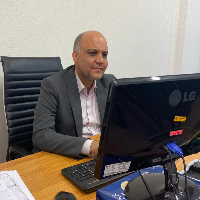A Framework for Identifying and Analyzing the Implementation Requirements of a Comprehensive Personal Income Tax System in Iran
Economic theory and international experience demonstrate that an effective tax system can reduce poverty, enhance social equity, generate stable government revenues, and mitigate budget deficits. However, Iran’s heavy reliance on oil revenues has historically diminished the urgency for tax system reforms. Under economic sanctions, neither oil revenues nor fiscal stability and social equity are in a favorable state. Furthermore, Iran’s current personal income tax system fails to meet the core criteria of an efficient tax system—namely, efficiency, equity, and simplicity.contrast, the comprehensive income tax model, implemented in many countries, offers a more equitable, efficient, and simplified alternative to Iran’s existing tax structure. This study seeks to (1) identify the prerequisites for implementing a comprehensive personal income tax system in Iran, (2) prioritize these requirements based on their significance, and (3) determine which should take precedence given Iran’s current conditions. Adopting this system could enhance fiscal equity, reduce inequality, lower the Gini coefficient, and create a more resilient budget less vulnerable to sanctions and oil price volatility.
Given its practical implications for the Iranian National Tax Administration (INTA), this study adopts an applied research approach with a mixed quantitative methodology, utilizing Fuzzy Delphi and MARCOS (Multi-Attribute Ranking and Choice for Optimal Outcomes System) techniques. Initially, 29 implementation requirements were identified through a literature review on comprehensive income taxation in Iran and other countries, supplemented by interviews with tax experts (including academics, researchers, and INTA officials). These requirements were refined using expert surveys and the Fuzzy Delphi method, applying a five-point Likert scale for fuzzification, ultimately narrowing the list to nine high-priority requirements. These were then ranked using the MARCOS decision-making method, evaluated against three criteria: Expert consensus Impact level Required human and financial resources
The analysis identified nine critical requirements for implementation: Streamlining bureaucratic inefficiencies Enhancing tax system transparency Increasing public trust in tax authorities Mitigating opposition from adversely affected stakeholders Aligning elite and influential perspectives Ensuring compliance with national policy frameworks Establishing robust legal enforcement mechanisms an integrated data collection and processing system Strengthening INTA’s technological infrastructure Using MARCOS, these were ranked with expert consensus and impact level as positive indicators, while resource intensity was a negative factor. The top four priorities were: Managing adversely affected stakeholders (wealthy individuals likely to resist reform)Strengthening INTA’s technological infrastructure (essential for accurate income assessment)Aligning elite and influential perspectives (critical for policy consensus)
Increasing public trust in tax authorities (vital for smooth implementation.
Successful implementation hinges on fulfilling these prerequisites, prioritized based on Iran’s specific conditions. Managing opposition from wealthy stakeholders emerged as the top priority, as resistance could obstruct reform. Technological upgrades are essential for efficient income tracking, while elite consensus-building and public trust is crucial for sustainable adoption. Without these measures, even minor implementation challenges could escalate into major crises.
-
Futures Studies on Investment Strategies of Iran's Social Security Organization with Emphasis on the Role of Technology: A Causal Layered Analysis Approach
Nasrin Arabi, Mohammadhasan Maleki *, Ali Lalbar, Majid Davoudinasr
Business, Marketing, and Finance Open, Jul-Aug 2025 -
Modeling the combined problem of determining the lot sizing and cutting stock of raw materials and solving it using a combined method based on a genetic algorithm and an exact solution method
Ali Mohaghar *, Ghasem Mokhtari, Mohammadhasan Maleki, Seyed Jamaleddin Hosseini
Journal of Decisions and Operations Research, Spring 2025


